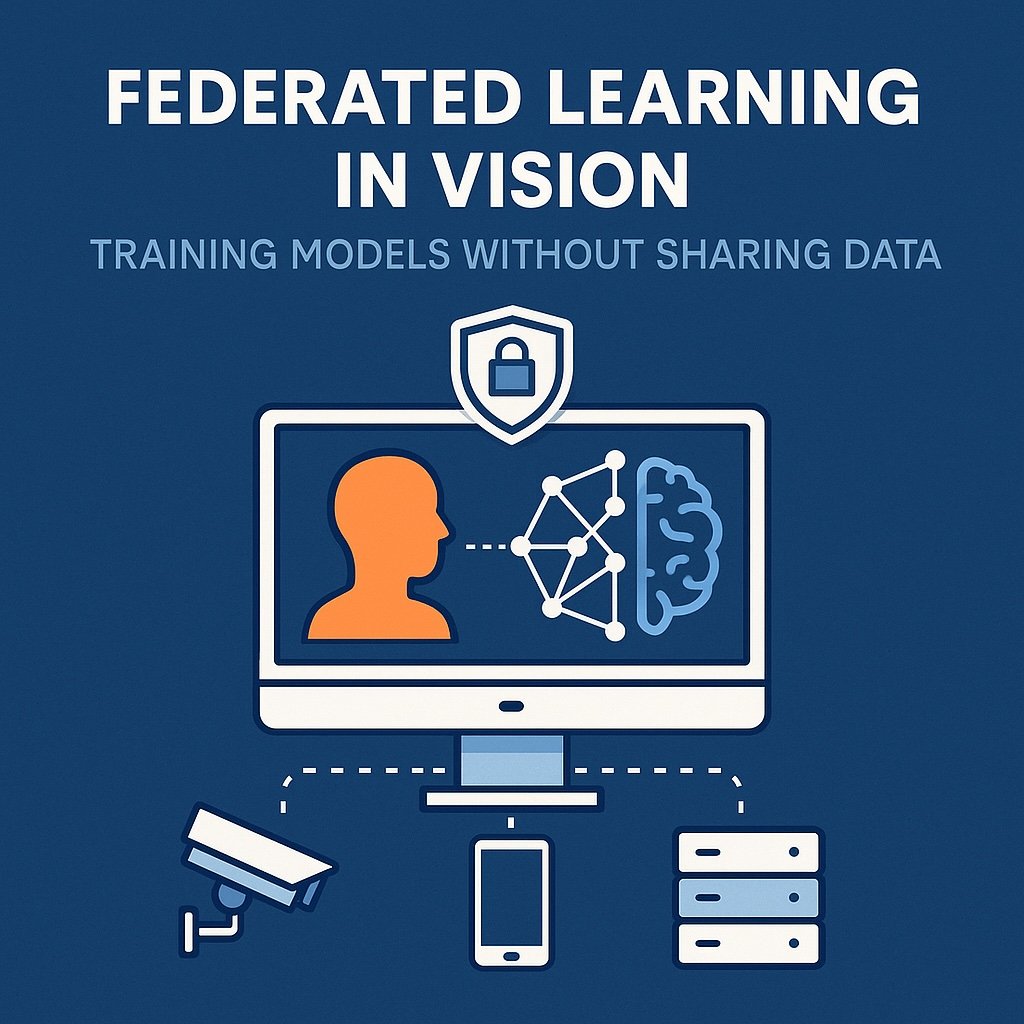
Federated Learning in Vision: Training Models Without Sharing Data
In a world where data privacy is both a legal requirement and a competitive differentiator, federated learning is emerging as a game-changer for computer vision. It allows organizations to train AI models across decentralized image data — without ever moving or exposing sensitive files. From retail shelf analytics and medical imaging to defect detection and autonomous driving, this privacy-first approach is enabling faster, safer innovation. In this post, we explore how federated learning works, where it’s delivering real ROI, and how C-level leaders can adopt it using a blend of ready-made APIs and custom solutions to stay ahead in the AI race.
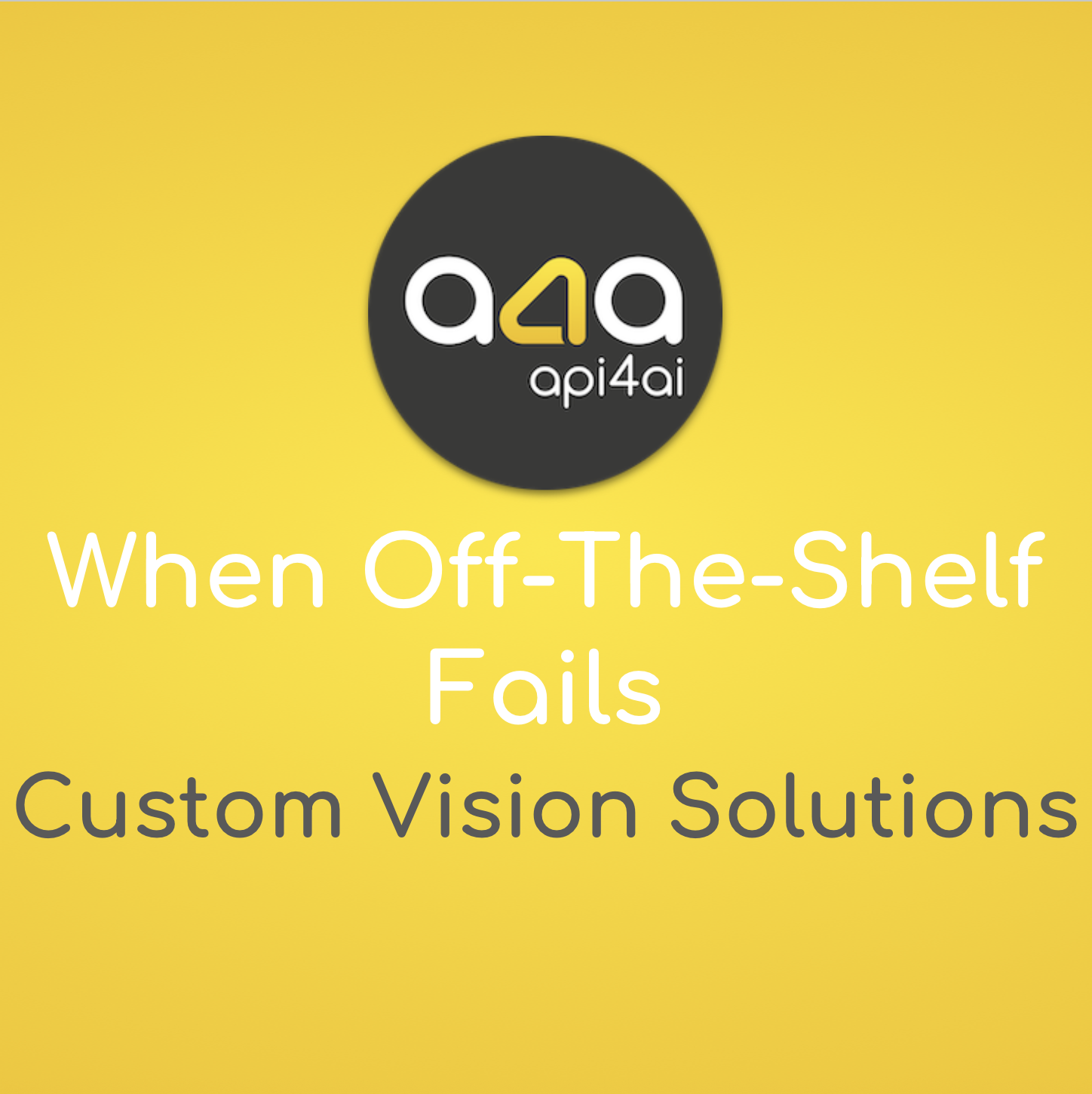
When Off‑The‑Shelf Fails: Custom Vision Solutions
Off-the-shelf vision APIs have made image recognition more accessible than ever, offering quick deployment and basic object detection capabilities. But when it comes to high-stakes industries like manufacturing, healthcare, agriculture and smart cities, the limitations of generic models quickly become apparent. Edge cases, domain-specific anomalies and real-time processing demands often expose gaps that standard solutions can't fill.
Custom vision models bridge this divide by delivering precision-tailored image recognition, built specifically for your business needs. Whether it's identifying microscopic defects on an assembly line, monitoring crop health from drone footage or ensuring brand protection in retail, bespoke models provide unmatched accuracy, reduced latency and full control over data privacy.
In this article, we explore the full journey — from identifying the weaknesses of off-the-shelf APIs to planning, building, and deploying a custom vision solution. Learn how the right development partner, combined with clear project scoping and smart MLOps practices, can transform your operations, reduce costs and give you a competitive edge in a data-driven world.
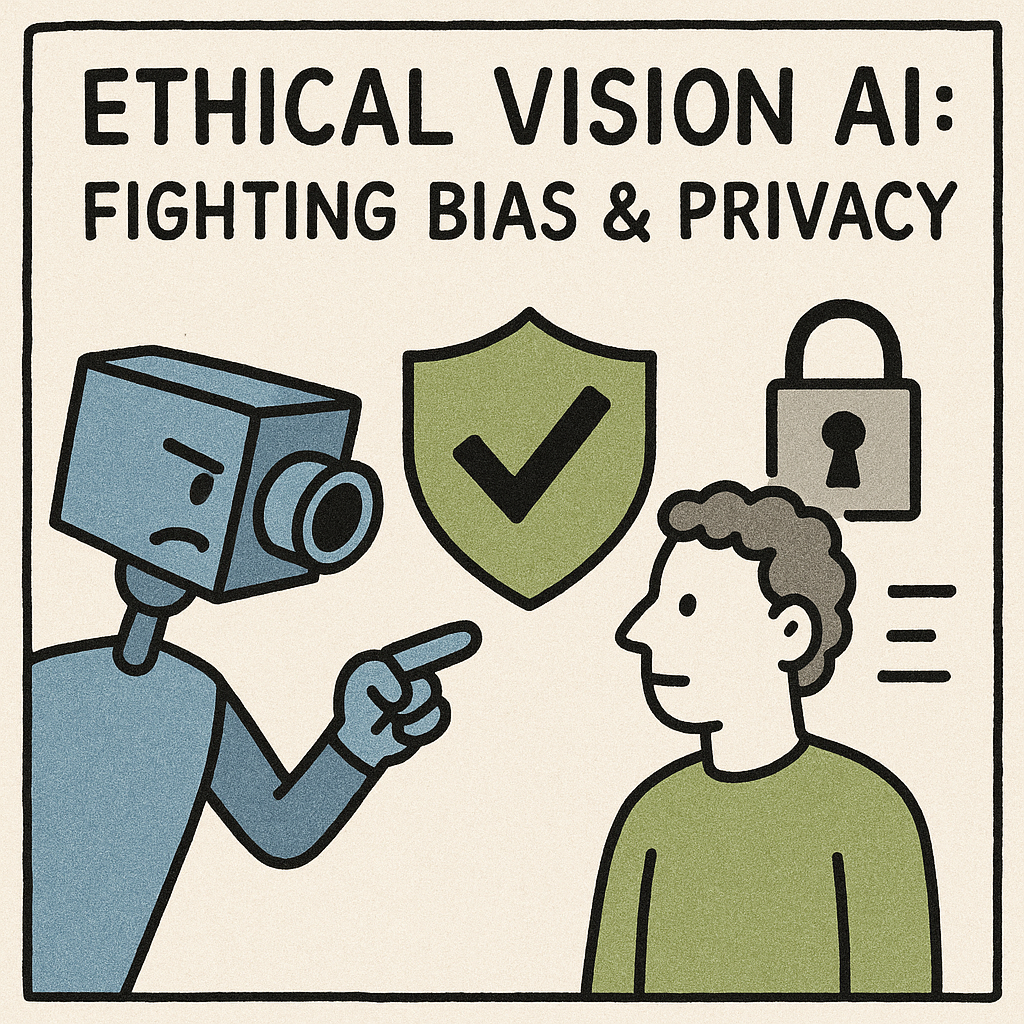
Ethical Vision AI: Fighting Bias & Privacy
Vision AI is transforming industries from retail to public safety — but without careful attention, it can also introduce bias and privacy risks. In this blog post, we explore how ethical challenges emerge in face recognition, surveillance and analytics and lay out practical strategies for building fair, transparent and privacy-first computer vision systems. From curating balanced datasets to designing explainable models and deploying anonymization tools like API4AI’s Image Anonymization API, discover how businesses can turn responsible AI practices into a powerful competitive advantage. Learn why ethics isn’t just about compliance — it’s the future of trusted innovation.
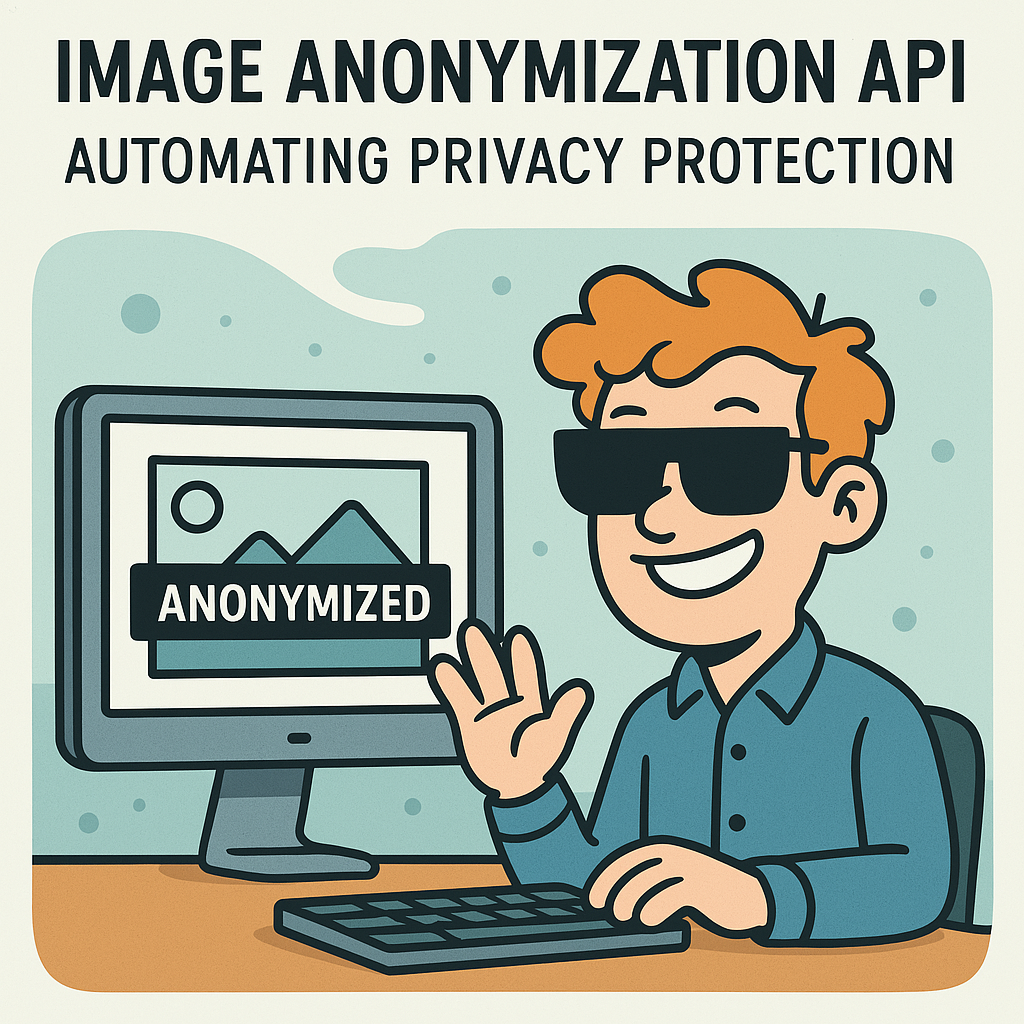
Image Anonymization API: Automating Privacy Protection
In an age where cameras are everywhere and visual data is collected at an unprecedented scale, protecting personal privacy has never been more important. From smart cities and retail environments to healthcare and academic research, images and videos often contain sensitive information such as faces, license plates and brand identifiers. Without proper handling, this data can expose individuals to risks and put organizations at odds with strict privacy regulations like GDPR and CCPA.
Image anonymization offers a reliable and scalable way to address this challenge. By using AI-powered tools to automatically detect and obscure sensitive elements, organizations can safely use visual content for analysis, sharing or public reporting — without compromising individual privacy. In this blog post, we take a deep dive into how automated image anonymization works, explore real-world use cases and share best practices for implementation. We’ll also look ahead at emerging trends like adaptive anonymization and highlight how cloud APIs can be combined with other image processing tools to build comprehensive, privacy-first solutions.
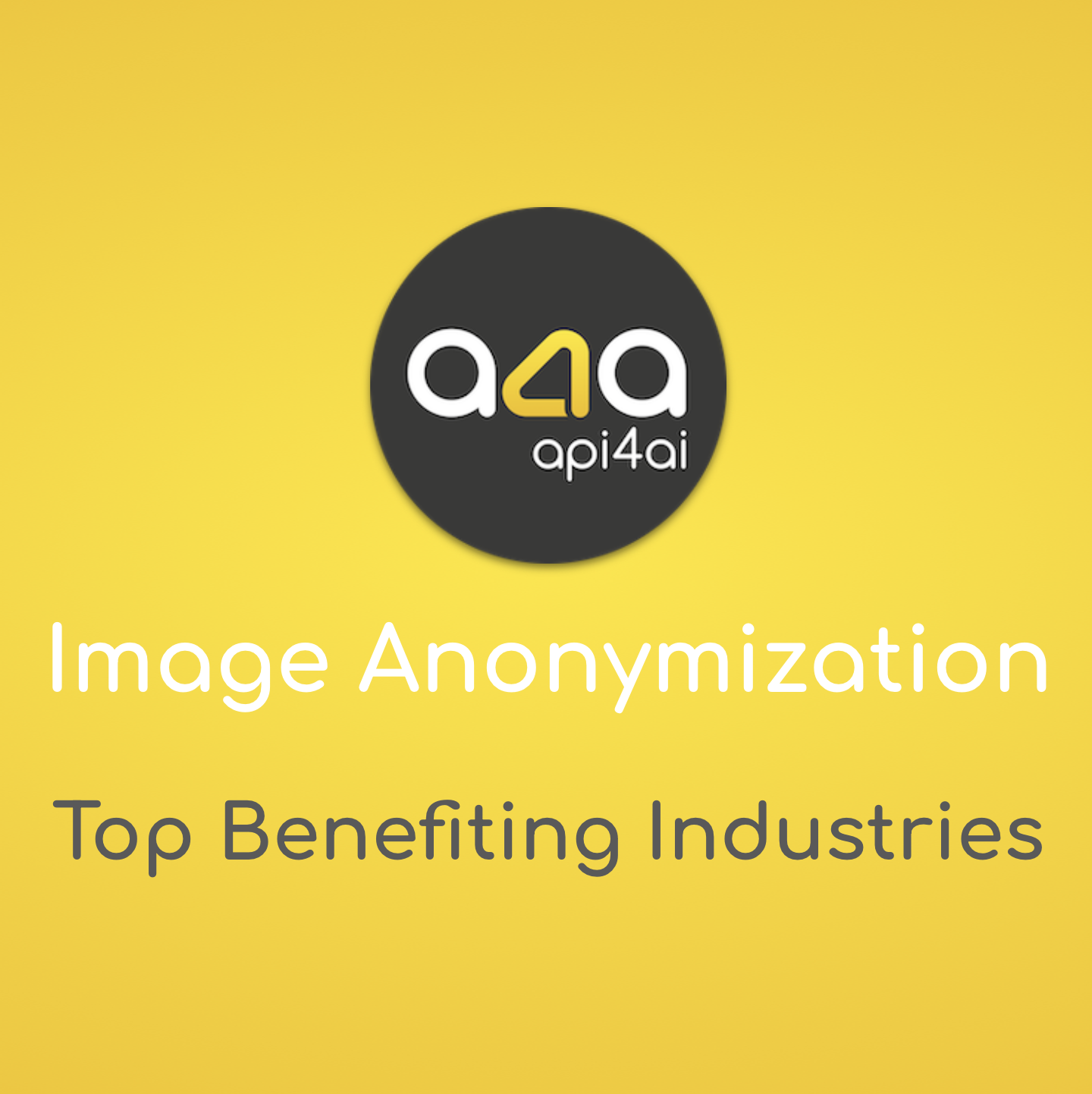
Top Industries Benefiting from Automated Image Anonymization
Visual data is both a powerful resource and a significant liability. Across industries — from healthcare and retail to automotive and financial services — protecting individuals' privacy within imagery is not just ethical but also legally mandatory. Automated image anonymization, powered by cutting-edge AI solutions, offers a robust and efficient way to address these challenges. Healthcare providers rely on these tools to comply with stringent regulations like HIPAA, safeguarding patient identities in medical imaging. Retailers enhance customer trust by anonymizing in-store video analytics and online shopper data. Meanwhile, automotive leaders leverage anonymization to secure personal information collected by smart vehicle cameras. With such widespread adoption and proven efficacy, AI-powered image anonymization APIs represent a transformative shift, helping businesses secure sensitive visual data effortlessly and effectively. Discover how automated anonymization is redefining privacy standards — and how your industry can benefit from these innovative solutions.

Why Image Anonymization is Vital for GDPR Compliance
In today’s digital world, businesses collect and process vast amounts of image-based data — whether through security cameras, user-generated content or AI-powered analytics. However, GDPR and other privacy regulations classify identifiable visual data as personal information, meaning companies must take extra steps to ensure compliance.
Image anonymization is one of the most effective ways to safeguard privacy while still utilizing valuable image data. By removing or obscuring personal identifiers such as faces, license plates and background details, businesses can continue leveraging visual data without violating data protection laws.
Traditional manual anonymization methods are slow, error-prone and difficult to scale, making them impractical for modern businesses. AI-powered anonymization solutions offer a fast, accurate and automated approach, ensuring compliance while maintaining data usability. From surveillance and healthcare to e-commerce and social media, AI-driven image anonymization is becoming a necessity for industries that rely on visual data processing.
As privacy regulations evolve, businesses that integrate AI-driven anonymization solutions today will be better equipped to handle future compliance challenges while protecting user trust and minimizing legal risks.

Cloud vs Edge: The AI Deployment Strategy for Image Processing in 2025
In 2025, the choice between cloud and edge computing isn’t just about technology — it’s about crafting a strategic AI deployment plan that balances speed, scalability and security. Cloud computing excels in handling complex, large-scale image processing tasks, while edge computing offers unparalleled speed for real-time applications. By combining the strengths of both in a hybrid approach, businesses can reduce latency, safeguard sensitive data and optimize costs. This blog explores how to leverage the cloud-edge synergy, adapt to evolving AI advancements and build a future-ready image processing strategy that drives innovation and growth.

Top Underrated AI Technologies You Haven't Heard Of Yet
While AI advancements like ChatGPT and autonomous vehicles dominate the headlines, many equally transformative technologies fly under the radar. This post explores underrated AI innovations such as self-supervised learning, federated learning, TinyML and vision transformers. These tools address challenges in data efficiency, privacy, edge computing, and image analysis, offering unique opportunities for businesses. By exploring these emerging technologies, organizations can unlock untapped potential, optimize workflows and gain a competitive edge in an ever-evolving landscape. Discover how these hidden gems can shape the future of AI innovation.

Top 10 Use Cases for Cloud APIs in Image Processing: Trends for 2025
In 2025, cloud APIs are revolutionizing how businesses handle image processing, offering unparalleled scalability, real-time performance and cost-effectiveness. From automating document digitization and enhancing e-commerce visuals to protecting brand integrity and driving large-scale sustainability projects, these tools are transforming industries. This blog explores the top 10 trends shaping the future of image processing, showcasing how cloud APIs are unlocking new opportunities and addressing unique challenges. Discover how these innovative solutions can streamline workflows, improve efficiency and help your business stay ahead in a rapidly evolving digital landscape.

GDPR Compliance Made Easy with AI-Powered Image Anonymization
Navigating GDPR compliance can be challenging, especially when it comes to handling visual data like images and videos. Manual anonymization is time-consuming, error-prone and impractical for large datasets. AI-powered image anonymization offers a game-changing solution, automating the process with unmatched speed, accuracy, and scalability. In this post, we explore the importance of GDPR compliance, the role of AI in safeguarding sensitive data and how tailored solutions can meet unique business needs. Discover how leveraging advanced tools can streamline workflows, ensure regulatory compliance and future-proof your operations in an increasingly privacy-conscious world.
